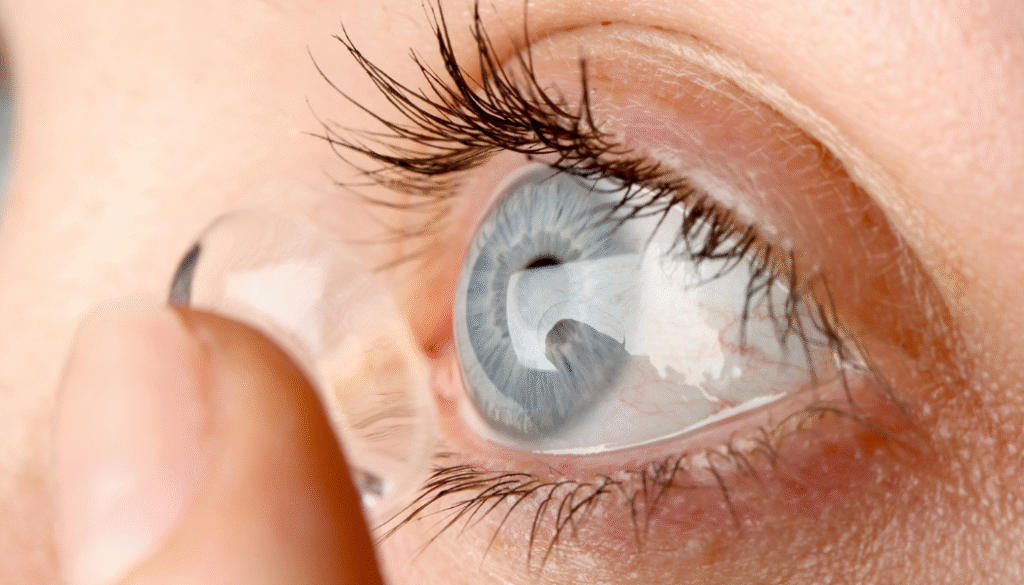
As people reach middle age, often after 40, near vision becomes harder. Reading, phone use, and small tasks are no longer easy. This condition is called presbyopia, and it is one of the most common forms of age-related vision loss.
Unlike a true disease, presbyopia happens naturally to almost everyone as they age. It is a normal result of the lens in the eye becoming less flexible. Over time, the eye loses its ability to focus on close objects.
Without correction, patients often stretch their arms to hold reading material farther away. This may help focus temporarily, but it causes strain and discomfort. Near vision difficulties often lead to fatigue, headaches, or frustration during reading or detailed work.
When people are young, the eye’s lens and muscles are soft and flexible. This allows smooth shifting between near and far vision. With age, both the lens and muscle fibers stiffen. Focusing up close becomes harder.
Presbyopia is not related to other refractive errors. Nearsightedness, farsightedness, or astigmatism do not prevent presbyopia from appearing. Everyone will notice some degree of reading vision treatments are needed after middle age. For some, the effect is mild, while others struggle more.
Presbyopia is usually clear to notice. Common symptoms include:
A presbyopia eye exam can confirm the diagnosis and rule out other eye conditions.
Several presbyopia correction options exist, including glasses, contacts, and surgery. The choice depends on lifestyle, age, and vision needs.
Reading glasses, or “readers,” are simple magnifiers. They improve near vision and are worn only for reading or close work.
Multifocal or Bifocal lenses are another option. Bifocals use two prescriptions, one for distance and one for near. Multifocals, such as progressive addition lenses (PALs), provide a smooth range of powers without visible dividing lines.
Many patients prefer PALs for cosmetic reasons. Progressive lens fittings also provide comfort by reducing the need to switch glasses.
For patients who prefer contacts, bifocal contact options and multifocal designs are available. These come in both soft lenses and rigid gas permeable (RGP) varieties.
Multifocal contact lenses allow sharp vision in multiple directions. Unlike glasses, they do not require tilting the head or moving reading material.
Another approach is monovision. In this method, the dominant eye is corrected for distance and the non-dominant eye for near. Modified monovision may combine one multifocal lens with one distance lens for balance.
A presbyopia eye exam helps decide which option works best for each patient.
Surgical procedures are another category of presbyopia correction options. Monovision LASIK corrects one eye for distance and the other for near. Conductive keratoplasty (CK) reshapes the cornea for short-term improvement.
Corneal inlays or onlays can also improve near vision. Another method is refractive lens exchange (RLE). This replaces the stiff natural lens with an artificial intraocular lens, similar to cataract surgery.
Ongoing research continues to create new multifocal lens solutions and better procedures. Patients should discuss options with their eye doctor before deciding.
Presbyopia affects nearly everyone after age 40. While it cannot be prevented, treatment provides relief from near vision difficulties. Glasses, contact lenses, or surgery all improve comfort and daily function.
Barnes Talero EyeCare offers presbyopia eye exams and a full range of reading vision treatments. With so many solutions available, patients no longer need to struggle with small print or poor lighting.
It depends on the patient. Options include reading glasses, bifocal contact options, progressives, or surgery.
A presbyopia eye exam measures near vision and tests focusing ability during close work.
Yes. Straining to read or focus up close can cause dizziness in some patients.
Presbyopia is age-related, not caused by vitamins. Deficiencies may affect eye health but not presbyopia.